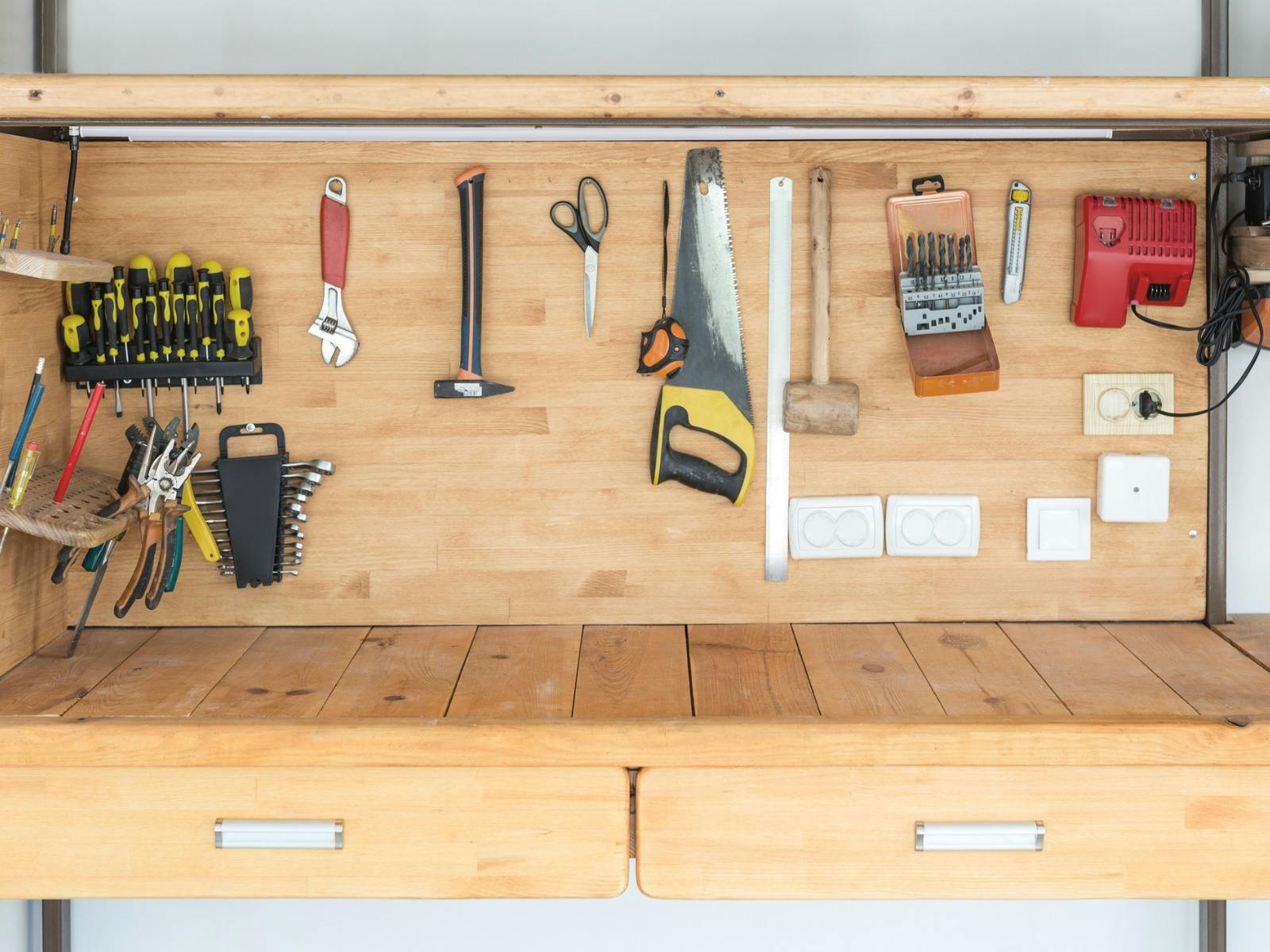19th November 2021
How to hang an Internal Door
Ever wondered how to hang a door? Suppose years of carpentry experience is required? Contrary to popular belief, replacing and hanging a brand-new door isn’t as complicated as you may think. As long as you have the appropriate tools, stay safe, and follow these simple steps – you’ll be able to revitalise your door in no time.
IronmongeryDirect
19th November 2021
5 mins
What tools do you need?
- Tape measure
- Pencil
- Screws
- Drill
- New internal door
- Hammer or mallet
- Chisel (25mm or 1inch)
- 2mm and 3mm drill bit
- Wood plane
- 2-3 door hinges
- Safety goggles
- Protective gloves
- Workbench and clamps

Plan & Prepare
Before you begin replacing your internal door, there’s a few things to tick off your list first…
- Double check that the door you’re replacing is a suitable size, material and finish for what you’re looking for. There’s a wide range of internal doors available so be sure to do your research.
- Ideally, it would be easier for you to use the same sized hinges in the same position as the original door. Otherwise, you’ll need to create new hinge positions. We suggest positioning them: 150mm from the top of the door and 225mm from the bottom and a third hinge in the centre (optional).
- It’s worth noting that you may need to trim your new door to fit the existing door frame. Often in older homes, door frames may not be standard size (762mm x 1981mm). Always check the manufacturer’s guide to know exactly how much of the door you’re able to trim or remove.
How to fit an internal door into a frame
Once you’ve completed the above, you’re ready to start the process of replacing your internal door. Here’s how to do it:
1) Carefully remove the original door to a safe place that’s not obstructing your workspace. As you remove the screws, make sure the door is supported by your weight. You should wear protective gloves while you are carrying out this procedure.
2) Rest your new door up against the doorway to see whether it needs to be trimmed. Use a pencil to mark where the original door opens onto the new door. Alternatively, use a tape measure to measure both the frame and height of the new door and mark accordingly.
3) Next, grab your workbench and use the clamps to secure to the door. You’ll now need to measure the exact distance that needs be trimmed, then divide that measurement across the top and bottom of the door. Ensure you leave a clearance of 3mm at both ends. Once you’ve done that, mark a line across the bottom of the door where you can begin cutting.
Remember, if you’re cutting a small amount use a plane or chisel. When you need to trim off more, use a panel or circular saw.
4) Hopefully, the door should be at the appropriate height to fit into the frame. Check the width and height, by holding the new door up against the frame. If it fits, move onto the next step. If it doesn’t, mark the excess with a pencil so you can shorten again with a chisel or saw – don’t forget to leave a clearance of 3mm at both ends.
5) Place the door into the correct position. To make things easier, set small wedges underneath to lift your new door off the ground. Next, check there is a 3mm gap between the door and frame on all sides. When you’re happy with the door’s position, mark where the current hinges reach on the door.
6) Rest the door on your workbench and carefully align the hinges onto the pencil marking. You’ll also need to mark the outline of the hinges onto the door as well. Then, measure the hinge plate’s thickness and mark a line of the same thickness onto the edge of the door.
7) Afterwards, grab your sharp chisel and accurately chip around the outline of the pencil markings. This is an indicator to let you know exactly where you should start to cut.
8) By positioning the chisel at a 45-degree angle to the door, make small 5mm cuts to the same depths as the hinge plate. Try to chisel in short intervals and follow your pencil markings as a guide. Next, use the flat side of the chisel to recess the area so that the hinge plate can be fitted.
9) Place the hinges into position and drill pilot holes. Once you’ve done that, screw the hinge plates onto the door by using the door manufacturer’s screws.
10) Next, position the door against the frame and ensure the door is 90 degrees ajar before fitting. This makes it easier for you to check whether the door fits the frame or not.
11) It’s now time to begin connecting the door to the hinge plates. Put the first screw through the lowest hole into the top hinge plate and fasten securely. Then, place a screw into the lowest hole in the bottom hinge plate and fasten securely.
12) Afterwards, screw the third and final screw into the top hole of the top hinge. Once they’re securely in place, check the door opens smoothly. If you notice the door catch, you’ll need to remove the door completely, mark the point that need trimming, and do so with a plane or sandpaper.
13) Finally, now that the door opens smoothly without catching, you can complete any finishing touches. Paint your brand-new door, create cut outs for door handles or door knobs, and add high temperature sealants to reduce the risk of fires spreading.

Tips to avoid any issues
- Cutting against the grain can cause the wood to split. Check that the chisel is sharp and only make small cuts rather than large ones.
- To reduce the chances of the wood splitting, consider drilling pilot holes to reduce the chances of unwanted damage.
- Staying safe is essential. When using the drill or chisel, be sure to wear safety goggles.
- Make sure to chisel away from your body.
- Internal doors can be heavy, ask for help if it’s needed. Plus, you should wear protective gloves when carrying the door to avoid any injuries.
